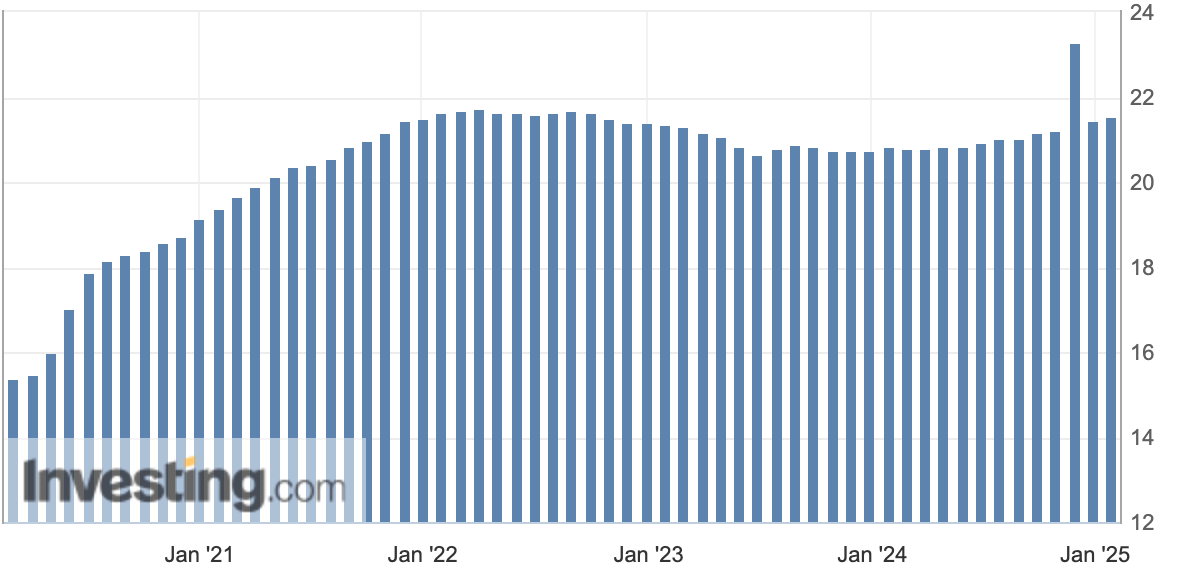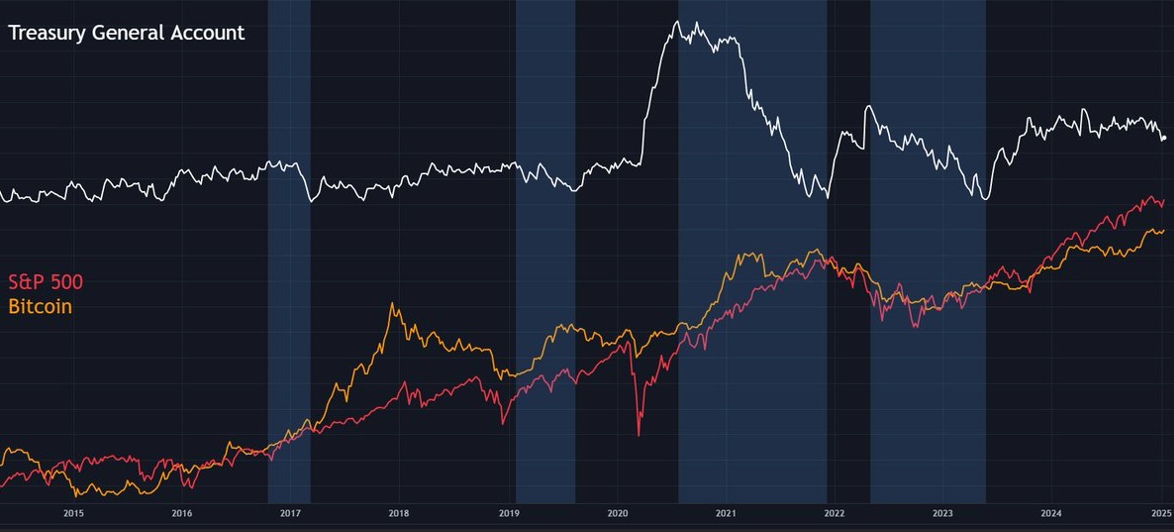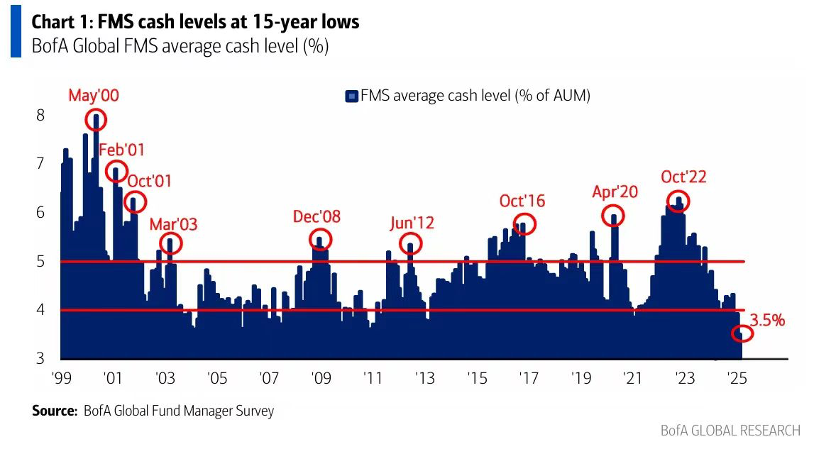With a new round of liquidity coming, can the crypto market take advantage of the situation to break through new highs?

Reprinted from panewslab
02/23/2025·2MWritten by: Hedy Bi, Lola Wang | OKG Research
In 2025, Trump's "America First" strategy will stimulate domestic economic growth by implementing trade protectionism, promoting industrial return, reforming taxes, and increasing military spending. The focus is to strengthen the independence of the US manufacturing, technology industry and energy sectors, while enhancing export competitiveness. The core goal of this series of policies is to promote the recovery of the U.S. economy, while reducing dependence on foreign production and capital, and enhancing the U.S. dominance in the global economy.
With the continuous advancement of these policies, especially the large-scale fiscal expenditure and deficit problems caused by military spending and large-scale infrastructure construction, it cannot be ignored. In addition, the existing pressure on US bonds and potential inflation expectations may make investors Start trying different risk hedging assets. Crypto assets have become a fulcrum for the choice of "Trump Economics".
Despite the continuous inflow of institutional funds, as investor expectations have become the main variable that determines the direction of the market, actual funds cannot bring dopamine to the market. This article is the fourth article of OKG Research's special topic Trump Economics in 2025, exploring the current dilemma of the crypto market and the market impact of large-scale liquidity release in 2025.
A crypto market that seeks liquidity
Driven by Trump's economics, the United States' self-sufficiency and industrial revitalization policies face high inflation and high debt pressures. Although the US macro CPI/PPI data from February 12 to 13 did not cause major market fluctuations, is it because these data are surface indirect data rather than direct data. For institutional funds, the market is more about digesting previous expectations. The real market favorability occurred when the Ministry of Finance released liquidity in early February. This practical operation injected substantial momentum into the market and promoted the rise of risky assets.
Specifically, the inflow of institutional investors is more like the expected landing and the redistribution of existing funds in the market based on this. In the macro report released by OKG Research last weekend, the author proposed that for the market, " limited liquidity" and the "precise reconfiguration" of the market are currently concentrated in Bitcoin, because the reason is the change in the trading behavior of the main holders behind it. Institutional investors tend to hold for a long time and concentrate, so the traffic of ETFs rarely spills over to other assets, which is one of the main reasons why investors are looking forward to the "copy season" that has been delayed.
However, although the minutes of the Federal Reserve meeting on February 19 emphasized the position of not rushing to cut interest rates, this did not have a significant impact on US stocks. Through observation of the market, the expectation of not cutting interest rates for the time being seems to have been digested, or the market has begun to conduct expected trading ahead of schedule for "suspension or slowdown of balance sheet".
But it cannot be denied that no matter how the expectations change, they are based on the macroeconomic situation, and expectations do not equal a "big bet" on the macro. What we have observed so far is that the Federal Reserve 's monetary policy will still face two major pressures. High inflation and high debt levels will make the Federal Reserve's monetary policy more cautious , which means that even in the face of slowing economic growth, the Federal Reserve will also Possibly avoid excessive easing monetary policies.
**A new round of "liquidity manifestation" in the crypto market may have
arrived**
Although at present, the United States did not implement large-scale quantitative easing (QE) in 2025 as in 2018 and 2020, that is, injecting into the market through the purchase of Treasury bonds and government debt assets to stimulate economic growth. But in the short term, in order to deal with the U.S. bond ceiling, TGA has already started injecting liquidity into the market this week.
Historically, whenever the U.S. government faces debt ceiling problems, the market often experiences short-term liquidity releases (from TGA), which in turn drives the price of various assets to rise, especially risky assets. The Treasury General Account (TGA) of the U.S. Treasury Department is an important tool used by the government to manage daily cash flow. The balance of this account will be adjusted according to the government's revenue and expenditure. When faced with debt ceiling restrictions, the Treasury Department usually reduces the supply of Treasury bonds and instead uses funds from TGA accounts to maintain the normal operation of the government.
In fact, changes in TGA balances directly affect the liquidity of financial markets. Every time there is a large-scale release of liquidity, the increase in risky assets, especially crypto assets, will be reflected. For example, from mid-2020 to the end of 2021 (this stage is superimposed with monetary policy), Bitcoin has increased by about 6 times. At this stage, the growth of M2 in the United States also reached 40%+, which is the fastest time period for M2 to grow in five years.

From the first half of 2022 to the first half of 2023, the Bitcoin price during the TGA liquidity release stage showed a certain lag. At this stage, the price of Bitcoin rose by about 100% from its lowest point to its highest point. However, from the beginning of the liquidity release to the end of the stage, overall, the price of Bitcoin rose by about 10%.

According to the forecast of Goldman Sachs' latest report, the first round of short-term TGA injection liquidity in 2025 will be approximately US$150 billion to US$250 billion. It is expected to continue until the summer until a new agreement is reached. This is the first round of predictable liquidity release. Other institutions also conducted analysis and believed that the first round is expected to inject approximately US$600 billion in liquidity in total.
According to the latest macro analysis from Bank of America (BofA), global fund managers’ cash holdings fell to a low of 3.5% in February 2025, reflecting an increased risk appetite among investors – they prefer stocks rather than cash and bonds. This rising risk appetite coincides with the current timing of TGA liquidity release. In other words, this round of short-term liquidity injection is expected to flow into the risky asset market, including crypto assets. Investors' direction of capital flow and their favor for risky assets may further drive the rise in the crypto market.

Not QE, better than QE?
Under the framework of Trump's economics, the strategy of promoting the United States' priority not only depends on means such as trade protectionism and industrial return, but also requires strong support from fiscal and monetary policies. To achieve self-sufficiency and stimulate the domestic economy, the Trump administration is more inclined to use fiscal tools such as TGA (Treasury General Account), and when necessary, liquidity injections through monetary policy tools to drive economic growth.
Unlike long-term monetary policy tools such as quantitative easing (QE), TGA liquidity release is a one-time and short-term operation. By reducing the issuance of Treasury bonds and using funds from TGA accounts to cope with short-term liquidity needs, the government can quickly inject market liquidity. Although this injection can drive risky assets to rise in the short term, due to the strong temporary nature of the injection of TGA funds, liquidity may be quickly recovered in a later stage, which may lead to a tightening effect of market liquidity.
In contrast, QE is a means by the Federal Reserve to expand its balance sheet and continuously inject funds into the market by purchasing assets (such as Treasury bonds), aiming to stabilize the financial market and stimulate economic growth. The long-term and persistent nature of QE is in sharp contrast to the short-term properties of TGA. To achieve the goal of industrial rejuvenation and enhance competitiveness, the Trump administration needs to use TGA to inject liquidity in the short term, while in the long run, rely on loose monetary policy measures to support the economy. However, the short-term liquidity release of TGA may also conflict with the direction of the Federal Reserve's monetary tightening, which may trigger market uncertainty in the face of the government's continuous increase in debt, which in turn affects the implementation of overall economic policies.
Overall, the Trump administration has injected new vitality into the market through the short-term liquidity release of TGA. While this release is not a long-term monetary easing like Quantitative Easing (QE), it is enough to drive the rise of risky assets such as crypto assets in the short term. For the crypto market, short-term capital inflows are undoubtedly a rare opportunity, but the subsequent liquidity tightening effect and U.S. debt problems still need attention. Long-term economic stability still depends on the effective cooperation of fiscal and monetary policies under the framework of Trump's economics. In the coming months, the monetary and fiscal policy tools adopted based on this framework will largely determine the performance of crypto markets.



 jinse
jinse